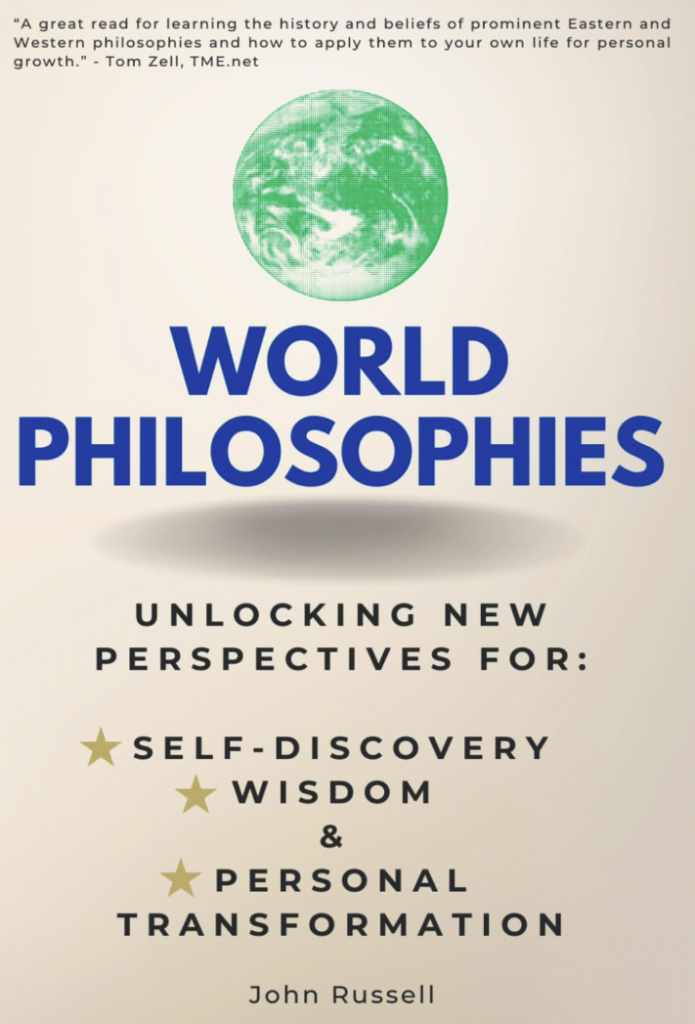Welcome to our article on Taoism, a fascinating religion and philosophy that originated in ancient China. If you’re curious to learn more about this ancient tradition, you’ve come to the right place. Taoism, also known as Daoism, emphasizes living in harmony with the Tao, which can be best understood as the natural way, the rhythm of the universe.
Taoism is often associated with the philosopher Lao Tzu, who is believed to have written the main book of Taoism, the Tao Te Ching. This sacred text provides guidance on how to live in harmony with the energy present in the universe.
In Taoism, there is a strong belief in spiritual immortality and the importance of balance. Taoists see all living creatures as part of a greater whole and strive to live in balance and harmony with the universe.
If you’re interested in delving deeper into the origins, philosophy, beliefs, and practices of Taoism, keep reading. We’ll explore the fascinating history of Taoism, its core beliefs, and the rituals and symbols that are an integral part of this ancient tradition.
Key Takeaways:
- Taoism is a religion and philosophy that originated in ancient China and focuses on living in harmony with the Tao, or the universe.
- The philosopher Lao Tzu is associated with Taoism and is believed to have written the Tao Te Ching, a central text in this tradition.
- Taoism emphasizes the importance of balance, spiritual immortality, and living in harmony with the universe.
- Practices in Taoism include meditation, making offerings, and adhering to virtues such as compassion, frugality, and humility.
- Taoism encompasses a variety of deities and symbols, such as the yin and yang symbol and the Bagua, which represent the interconnectedness of all things.
The Origins and Philosophy of Taoism
The origins of Taoism can be traced back to ancient China, with the philosopher Lao Tzu being credited as its founder. However, there is little evidence of Lao Tzu’s existence, and it is believed that the Tao Te Ching is a collection of earlier sayings from multiple authors. The Tao Te Ching serves as a guide for Taoist thought and actions, emphasizing the concept of the Tao as the way of the universe.
Taoism teaches that all living creatures should live in harmony with the universe and the energy present in it. It emphasizes the balancing forces of yin and yang, which represent the interconnectedness and interdependence of all things in the universe. The philosophy of Taoism encompasses the understanding that everything in the world has its opposite, and these opposites complement and support each other.
The Philosophy of Balance: Yin and Yang
One of the fundamental principles of Taoism is the concept of yin and yang. The yin represents the feminine, passive, and dark aspects, while the yang represents the masculine, active, and light aspects. The philosophy of yin and yang suggests that these opposing forces are interconnected, and one cannot exist without the other. It emphasizes the importance of maintaining a balance between these forces in order to achieve harmony and well-being.
Here is an example of how yin and yang are represented:
| Yin | Yang |
|---|---|
| Moon | Sun |
| Darkness | Light |
| Feminine | Masculine |
| Stillness | Motion |
The philosophy of yin and yang teaches that everything in the universe is interconnected and constantly changing. It serves as a reminder to embrace both the light and the dark, the passive and the active, in order to achieve balance and harmony in life.
Through its emphasis on balance, harmony, and the interconnectedness of all things, Taoism has had a profound impact on Chinese culture and spirituality for centuries. It continues to be practiced and studied today, attracting individuals who seek a deeper understanding of the universe and their place within it.
Taoist Beliefs and Practices
Taoism encompasses a set of beliefs and practices that guide its followers on a path towards spiritual enlightenment and living in harmony with the universe. Central to Taoist philosophy is the idea of the Tao, which represents the natural order and energy that flows through all things. Taoists believe in the spiritual immortality of the soul, where the spirit of the body joins the universe after death, continuing its existence in a different form.
One of the key concepts in Taoism is the notion of balancing forces, known as yin and yang. Yin represents the feminine, receptive, and passive qualities, while yang represents the masculine, active, and assertive qualities. These forces are not opposites but rather complementary and interdependent, working together to maintain harmony and unity. Taoists strive to find balance within themselves and in their interactions with the world around them.
Meditation plays a significant role in Taoism, as it helps practitioners cultivate mindfulness and connect with the energy of the universe. Through meditation, Taoists aim to quiet the mind, let go of attachments, and experience a state of inner stillness and tranquility. By achieving this state, individuals can gain insight, clarity, and a deeper understanding of the Tao.
In addition to meditation, Taoists engage in various rituals and practices to honor the Tao and promote spiritual growth. Offerings are made in temples and monasteries as a gesture of gratitude and respect. These rituals can include lighting incense, burning paper money, and presenting food or flowers as offerings to deities and ancestors.
Taoism also emphasizes the cultivation of virtues as a means of living in harmony with the Tao. Central to these virtues are the three treasures of compassion, frugality, and humility. Taoists strive to approach others with kindness and understanding, live a simple and modest life, and embrace humility in their interactions with the world.
Furthermore, Taoism encourages individuals to live in alignment with the natural rhythm and flow of life. This involves embracing simplicity, spontaneity, and naturalness in one’s actions and thoughts. By letting go of unnecessary striving and resistance, Taoists believe that individuals can find peace, contentment, and fulfillment.
The Three Treasures in Taoism
In Taoism, the three treasures known as compassion, frugality, and humility are considered essential for achieving spiritual harmony and cultivating a virtuous life. These treasures serve as guiding principles for Taoist practitioners:
- Compassion: Taoists emphasize the importance of showing empathy, kindness, and understanding towards all living beings. By practicing compassion, individuals develop a deep sense of interconnectedness and foster harmonious relationships with others.
- Frugality: The virtue of frugality encourages moderation and simplicity in one’s desires and material possessions. Taoists believe that by restraining excessive desires and practicing contentment with what is necessary, individuals can find inner peace and freedom from attachment.
- Humility: Humility is valued in Taoism as it fosters a sense of openness, acceptance, and non-attachment. By recognizing the vastness and interconnectedness of the universe, individuals can let go of ego-driven desires and embrace a humble attitude towards life.
By integrating these virtues into their daily lives, Taoists seek to align themselves with the natural flow of the Tao and live in harmony with the universe.
Taoism Deities and Symbols
Taoism incorporates an array of gods and deities derived from diverse cultures within China. These deities are seen as integral parts of the Tao and are venerated through rituals and offerings conducted in temples. Noteworthy Taoism deities include the Three Pure Ones, Yuanshi Tianzun, Lingbao Tianzun, and Daode Tianzun.
Alongside deities, Taoism utilizes various symbolic representations that hold great significance. The most prominent of these symbols is the yin and yang symbol, which embodies the delicate balance between opposing forces. The yin aspect represents darkness, femininity, and passivity, while the yang aspect embodies light, masculinity, and activity. The yin and yang symbol visually depicts the interdependence and harmony of these contrasting forces and is often associated with the concept of cosmic balance.
Another meaningful symbol in Taoism is the Bagua, which consists of eight trigrams. Each trigram represents a unique concept and corresponds to elements, directions, and qualities. The Bagua is employed for divination, understanding the flow of energy, and achieving harmony in various aspects of life, such as personal relationships, health, and career.
The Taijitu, commonly known as the yin-yang symbol, showcases the perpetual flow and interplay of opposing forces within the Tao. It illustrates the idea that everything exists as a constant cycle of transformation and that harmony can be achieved by embracing the dynamic nature of existence.
In summary, Taoism encompasses a diverse pantheon of deities and relies on powerful symbolic representations to convey its teachings and principles. These deities and symbols serve as focal points for worship, meditation, and contemplation, enabling practitioners to connect with the profound wisdom and limitless energy of the Tao.
Conclusion
Taoism is a vibrant and intricate religious and philosophical tradition that advocates for living in perfect harmony with the natural world. With its roots in ancient China, Taoism is closely associated with the esteemed philosopher Lao Tzu and his fundamental work, the Tao Te Ching. At its core, Taoism emphasizes the significance of achieving balance among opposing forces, nurturing virtuous qualities, and leading a life in accordance with the universal principles of the Tao and the energy that permeates the cosmos.
Taoism encompasses a diverse range of beliefs, practices, deities, and symbols, reflecting the profound depth and breadth of its teachings. With devoted followers worldwide and official recognition as one of the five major religions in China, Taoism continues to captivate individuals seeking a path of serenity, inner growth, and a profound sense of connection to the larger universe.
By embracing the concepts of yin and yang, Taoism reminds us of the interdependence and interconnectedness of all things. Through meditation, rituals, and adherence to virtues like simplicity, spontaneity, and humility, Taoists strive to align themselves with the natural rhythm of life and harmoniously engage with the energy of the universe. Whether in the contemplative ambiance of a Taoist temple or the quiet solitude of personal practice, Taoism offers a unique and inspiring pathway to living a truly balanced existence.




